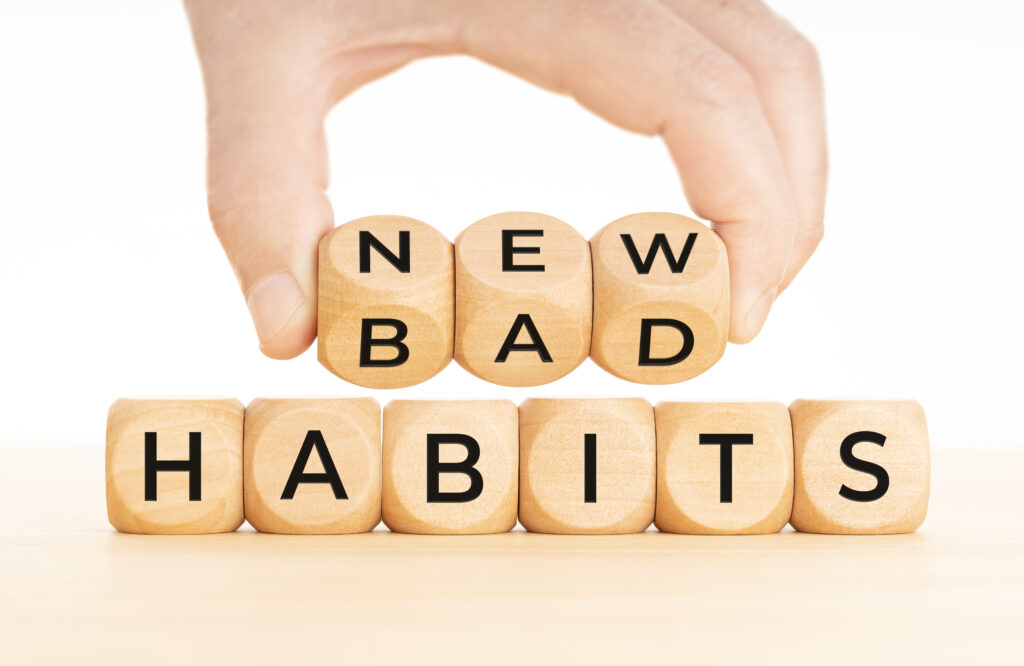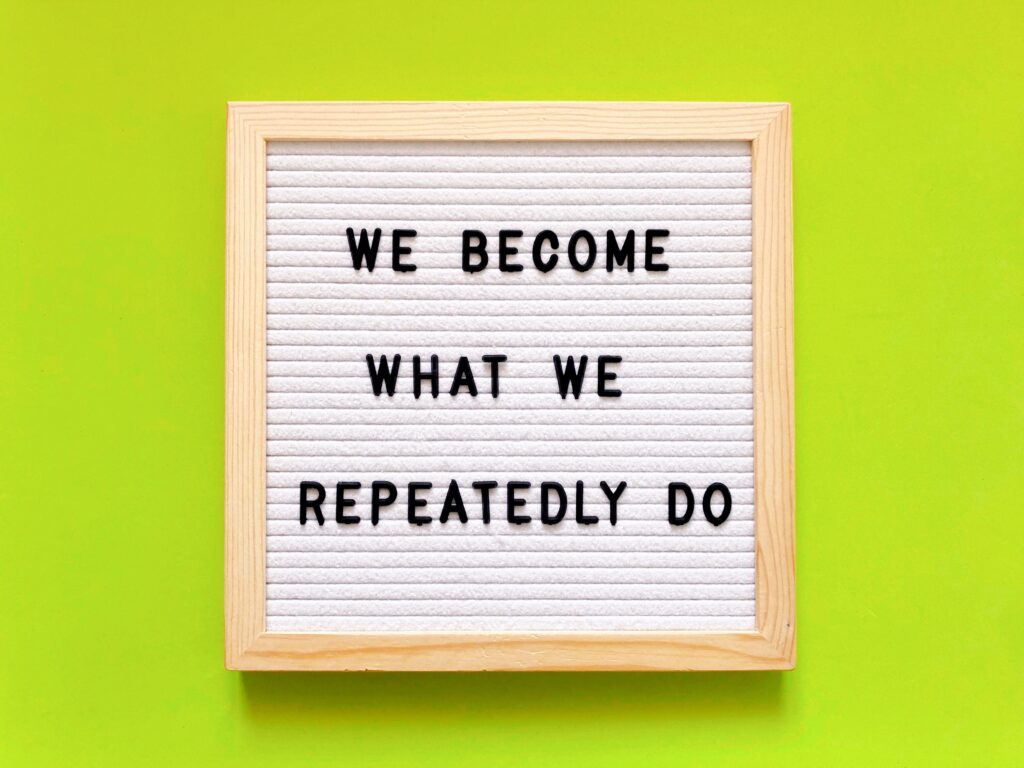Forming Healthy Routines: How to Make It Count
Creating a healthy routine is not always easy but it can be done if you make it count. Having the right habits and routines can help us to stay productive, healthy, and balanced.
In this blog post, we will explore the science of habit formation and discuss how to create productive and healthy routines that will make a real difference in our lives.
So, let’s get started on the journey to forming healthy routines and making it count!
Understanding Habit Formation

Habits are a fundamental part of our daily lives, influencing our behaviors and shaping who we are.
Understanding habit formation is essential if we want to create productive and healthy routines. Habit formation is a psychological process that occurs when a behavior becomes automatic through repetition. It starts with a cue, which triggers a routine, leading to a reward. Over time, this cycle strengthens neural pathways in our brains, making the behavior more automatic and ingrained.
The key to understanding habit formation lies in the concept of the habit loop. The habit loop consists of three components: the cue, the routine, and the reward. The cue acts as a trigger, signaling the brain to start the routine. The routine is the behavior itself, which can be anything from eating a cookie to going for a run. Finally, the reward is the positive reinforcement that follows the routine, satisfying a need or desire.
By understanding the habit loop, we can identify the cues and rewards associated with our existing habits and use them to our advantage when forming new ones. For example, if the cue for a bad habit is feeling stressed, we can replace the routine of reaching for unhealthy snacks with a healthier alternative, like going for a walk or practicing deep breathing exercises.
The Three Components of Habit Formation

In order to understand how to effectively create productive and healthy routines, it’s essential to understand the three components of habit formation. These components are known as the cue, the routine, and the reward.
The cue is the trigger that signals your brain to start a particular habit. It can be something as simple as a time of day, a specific location, or even an emotional state. For example, feeling stressed at work may serve as a cue to reach for a sugary snack.
Next is the routine, which is the behavior or action that you engage in after the cue. This is the actual habit that you are trying to form, whether it’s exercising, reading, or meditating. It’s important to be specific about what you want the routine to be in order to make it more effective.
Lastly, the reward is the positive reinforcement that your brain receives after completing the routine. This can be a sense of accomplishment, a feeling of relaxation, or even a small treat. The reward is what helps solidify the habit in your brain, making it more likely that you will repeat it in the future.
Understanding these three components allows you to intentionally design your routines in a way that supports your goals. By identifying the cue, choosing a beneficial routine, and ensuring a satisfying reward, you can create habits that contribute to your overall productivity and well-being.
In the next section, we will discuss how to break bad habits and replace them with healthier alternatives.
Breaking Bad Habits and Forming Good Ones

Breaking bad habits and forming good ones can be a challenging process, but understanding the science of habit formation can help make it easier.
To break a bad habit, it is essential to identify the triggers that lead to the habit and find ways to disrupt them. For example, if the habit is reaching for unhealthy snacks when feeling stressed, finding alternative stress-relief strategies like deep breathing or going for a walk can help break the cycle.
Forming good habits, on the other hand, requires consistent repetition and positive reinforcement. Start small by setting achievable goals and gradually increase the difficulty over time. For example, if the goal is to exercise regularly, start with short workouts and gradually increase the duration and intensity. Celebrate each small success along the way to keep motivation high.
Another helpful strategy is to find an accountability partner or join a community with similar goals. Surrounding yourself with supportive individuals can provide encouragement and motivation.
Additionally, making the new habit a part of your daily routine can help solidify it. Whether it is meditating for 10 minutes every morning or preparing a healthy lunch the night before, integrating the habit into your daily life can make it easier to maintain.
Remember, breaking bad habits and forming good ones takes time and effort. It is important to be patient with yourself and not get discouraged by setbacks. With persistence and an understanding of habit formation, you can successfully break bad habits and create productive and healthy routines.
Implementing Healthy Routines

Now that we have a solid understanding of the science behind habit formation and the importance of breaking bad habits and forming good ones, it’s time to put that knowledge into practice and start implementing healthy routines into our daily lives.
Start small. Pick one area of your life that you want to improve upon and focus on creating a new habit around it. For example, if you want to start exercising more regularly, commit to doing a 10-minute workout every morning before work. This may seem like a small change, but over time it will become a habit and you can gradually increase the duration and intensity of your workouts.
Another important aspect of implementing healthy routines is setting specific goals and tracking your progress. Use a habit tracking app or journal to monitor your daily activities and track your progress towards your goals. This can help you stay motivated and make adjustments if needed.
Lastly, don’t be too hard on yourself if you slip up or miss a day. Remember that forming a new habit takes time and effort, and setbacks are a normal part of the process. Be patient with yourself and keep working towards your goals. Over time, you’ll start to see the benefits of your healthy routines and they will become an integral part of your daily life.
Maintaining Your Routines Over Time

Once you have established healthy routines, the key is to maintain them over time. It can be easy to slip back into old habits if you’re not careful, but with a few strategies, you can stay on track and reap the benefits of your efforts.
One of the most important things in maintaining your routines is consistency. Stick to your established schedule and don’t let exceptions become the norm. It’s okay to have occasional deviations, but make sure they don’t derail your progress. Remember, it takes time and effort to form new habits, so stay committed and focused.
Another strategy is to make adjustments as needed. Over time, your routines may need tweaking to remain effective. Assess your habits regularly and identify any areas that need improvement. Be flexible and open to change, as this will ensure your routines stay relevant and beneficial.
Accountability is also crucial for maintaining your routines. Find a support system or accountability partner who can help keep you motivated and on track. Share your goals and progress with them, and allow them to provide encouragement and gentle reminders when needed.
Finally, don’t forget to celebrate your successes along the way. Acknowledge and reward yourself for sticking to your routines and achieving your goals. This positive reinforcement will help reinforce your habits and keep you motivated to continue.
By consistently practicing and maintaining your healthy routines, you will build a solid foundation for productivity and well-being. Remember, it’s a journey, and staying committed to your habits will yield long-lasting results.
Ready to sell your property? Give us a call today and learn more about our professional photography services and marketing that can boost your property listing!
Plus, explore our virtual assistant coaching program to level up your business. Don’t forget to tune into our new podcast for even more valuable insights!
